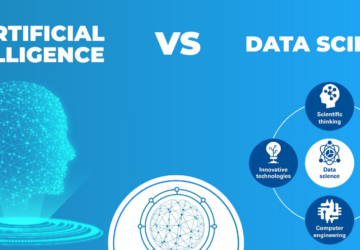When presenting your business to the world, there are several viable methods you can use. One company may opt to collect online reviews on a testimonials page. Another company might partner with its customer base to create an affiliate program, asking its customers to spread the word.
Another alternative form of creating positive social proof for your business is by using case studies. Case studies are a highly effective way of presenting your success to the world as they allow you to display exactly how you tackle your core offering and demonstrate previous results. For potential clients, this can satisfy them as you can offer to provide the same or similar results as you’ve already obtained with past clients.
Cast studies are wildly popular in the world of content marketing, with 71% of leading marketing teams utilizing case studies regularly. Yet, not all case studies are the same, with some eliciting a far more favorable response, depending on the industry you work in.
In this article, we’ll explore the core formats of case studies, analyze their impact, and discuss how to effectively find company data to populate your next publication. Let’s dive right in.
What Core Case Studies Can My Business Choose From?
A case study is a published document demonstrating how your business overcame a problem, provided a certain solution, or achieved a set of desired results. In the corporate world, the majority of businesses will use descriptive case studies, which define the core task at hand before then following through with how a company achieved or overcame that task.
Another case study format that’s common to the world of business is a SWOT analysis. SWOT, which stands for Strengths, Weaknesses, Opportunities, and Threats, is useful when planning a future endeavor. However, these case studies are typically for internal use, such as when a company is planning on acquiring another and wants to research how this could impact them in the future.
Another common case study format, especially over the past few years, has been publishing corporate social responsibility studies. These will use internal data to document how a company is pursuing its environmental goals, giving back to charities, or organizing charity fundraisers in its local community.
Depending on the final goal of your case study, the correct option for you will vary.
How to choose the correct case study format
When selecting the correct case study format for your business, you should start with your final goal. Do you want to gain more public attention? Perhaps you want to prove to future customers that you can achieve your core offering and provide a similar service for them.
By identifying what your goal is when producing this case study, you’ll have a clear objective that then helps to create an effective structure going forward. The structure of your case study will directly reflect your goal, allowing you to outline your objective in the introduction and then work through how you achieved what you set out to do.
Case studies work most effectively when they’re specific, goal-oriented, and have data-backed results.
How Do I Obtain Data for a Business Case Study?
Despite the format of the case study that you opt for, it must contain a high degree of data that proves what you’re saying as true. Demonstrative facts will orientate your readers and allow them to take away a more concrete understanding of the work you’ve conducted.
For example, a case study that states a business “helped a company grow their social media presence” fails to quantify the change they instilled. Instead, a data-first company could include that they “grew the social media presence of X company by 50% over two months.”
By including statistics throughout a case study, a business is able to exemplify its impact, making the case study more believable and impactful to its audience. One of the most effective ways of extracting data for a case study is to look at your internal documents, platforms, data warehouses, and analytics suites.
Many platforms will include a detailed analytical suite that you can utilize. For example, you could use Google Search Console to track the total clicks on a website, helping you to quantify the real-world impact of a SEO campaign that you launched. However, some changes require you to work with other data formats, like unstructured and semi-structured data.
In these cases, you’ll have to go through a few more steps before you can access a useful final form of data. Typically, your data warehouse or cloud data warehouse will store the vast majority of your unstructured and semi-structured data related to your work with other companies. When interacting with large-scale NoSQL databases or relational databases, you can use the json_extract command to rapidly extract information that’s associated with the fields you include.
You can use this command on nested data, arrays, and various other statements. By collating data with this command, you can create a more specific base of data for further analysis. When collecting data for a case study, this is a vital step as it allows you to gain raw data that you can then base the rest of your investigation on.
Knowing what data to extract will depend on the project itself. However, what you are actively trying to prove will point you in the right direction and help you find the correct fields to extract. From there, feeding this raw data into analytical tools or transforming it into a more appropriate format will facilitate future analysis.
From there, you can use this data and create visualizations that you can feed directly into your business case studies.
Final Thoughts
Utilizing case studies can be a powerful way of translating how effective your business is at certain functions to a wider audience. As a data-driven and data-backed approach, case studies facilitate the sharing of previous experiences and the promise to new clients that you can repeat them.
The more case studies that your business introduces and displays on its site, the more social proof you will have to prove your reliability. No matter which format you choose as fitting for your business objectives, it’s vital to include as much core data as possible in your reviews.
By extracting data from your customer relationship management platforms, internal business documents, and analytics software, you’ll have a range of more specific details to share with future customers. The vast majority of potential customers will skim through your case studies, looking for impactful facts, making data vital when creating effective case studies.








